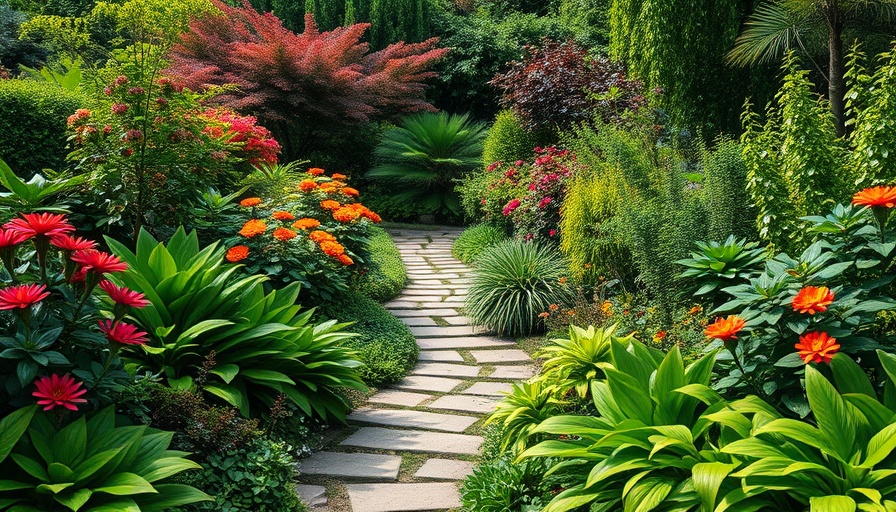
Transform Your Outdoor Space with Wildscaping
In the heart of urban life, a little magic lurks in gardens that embrace the philosophy of wildscaping. This approach not only beautifies your surroundings but also plays a vital role in preserving local ecosystems. Based in a charming neighborhood by the ocean, the gardens of Laura and Sam perfectly illustrate how a wildscaped garden can flourish amidst concrete and steel.
Understanding Wildscaping: A Symphony of Nature
So, what exactly is wildscaping? At its core, it's about designing your garden with wildlife in mind, creating a haven for local flora and fauna. Utilizing native plants is pivotal, as they attract local species and offer much-needed food and shelter. This philosophy supports a diverse range of creatures—from delicate butterflies to industrious bees. The beauty of wildscaping lies in its adaptability; every garden can be a unique sanctuary, reflecting the character of both the gardener and the local ecosystem.
The Art of Layering: Creating a Multi-Dimensional Landscape
One of the standout features of Laura and Sam's garden is its layered structure. By intertwining trees, shrubs, and perennials, they developed a vibrant space full of life and visual interest. A layered landscape not only enhances biodiversity but also offers year-round beauty. Fruits, nuts, and flowers provide sustenance for both wildlife and the garden's caretakers. Additionally, creating pathways within the garden ensures accessibility for maintenance and allows for intimate exploration among the plants.
Water Management: Essential for Garden Vitality
Just like every creature, garden plants and wildlife require water. Implementing water features such as bird baths or small ponds can attract beneficial insects and provide essential hydration. These natural resources profit both the garden’s inhabitants and its human caretakers, deepening the connection between people and nature.
Variety: The Spice of Life in Your Garden
In wildscaping, including a wide array of native plants fosters biodiversity. Incorporating not just flowers but also herbs and vegetables will create a rich environment beneficial to pollinators and other wildlife. For example, a corner reserved for a vegetable garden alongside a spectrum of wildflowers shelters beneficial insects, encouraging a natural system of pest control while enhancing your gardening project.
Embrace Organic Practices for Sustainable Gardening
Every decision in wildscaping should aim at reducing the use of chemicals and fostering organic growth. From composting kitchen scraps to practicing crop rotation, every step contributes to a healthier garden ecosystem. Techniques such as companion planting further protect against harmful pests all while maximizing the health and productivity of your plants.
Concrete Jungle to Green Oasis: The Impact of Urban Wildscaping
Urban wildscaping presents unique challenges, but it also offers opportunities for creativity. By transforming city lots into vibrant, self-sustaining gardens, residents can not only beautify their surroundings but also contribute to ecological balance in metropolitan settings. The positive effects of engaging with local flora go beyond aesthetics, promoting mental well-being and community connection.
Your Turn: Start Wildscaping Today
Diving into the world of wildscaping can seem daunting, but it begins with simply choosing a variety of native plants that suit your garden conditions. Explore local gardening communities for advice, share experiences, and contribute to the flourishing ecosystem around you. Remember, wildscaping doesn’t just benefit wildlife; it enriches your life.
As you embark on your journey toward wildscaping, remember to embrace the beauty of the process. Every garden can evolve into a local paradise filled with life, color, and spontaneous joy. Take action today, start your own wildscaping project, and witness the transformation of your outdoor space into a cherished ecosystem.
 Add Row
Add Row  Add
Add 




Write A Comment